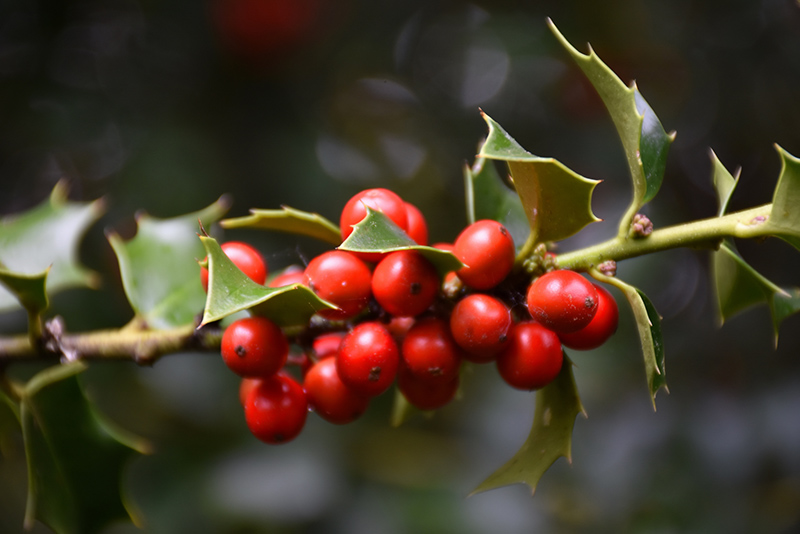>> Home
Height: 20 feet
Spread: 12 feet
Sunlight:
![]()
![]()
Hardiness Zone: 5b
Other Names: Aquipern Holly
Description:
Lustrous dark green, evergreen foliage with spiny edges; brilliant scarlet fruit ripens early and adds color to the winter landscape; does best in evenly moist, acidic soil
Ornamental Features
San Jose Holly is primarily grown for its highly ornamental fruit. It features an abundance of magnificent red berries from mid fall to mid winter. It has attractive dark green evergreen foliage. The spiny oval leaves are highly ornamental and remain dark green throughout the winter.
Landscape Attributes
San Jose Holly is a dense multi-stemmed evergreen tree with an upright spreading habit of growth. Its average texture blends into the landscape, but can be balanced by one or two finer or coarser trees or shrubs for an effective composition.
This tree will require occasional maintenance and upkeep, and is best pruned in late winter once the threat of extreme cold has passed. It is a good choice for attracting birds and bees to your yard. It has no significant negative characteristics.
San Jose Holly is recommended for the following landscape applications;
- Accent
- Vertical Accent
- Mass Planting
- Hedges/Screening
- Naturalizing And Woodland Gardens
Planting & Growing
San Jose Holly will grow to be about 20 feet tall at maturity, with a spread of 12 feet. It has a low canopy, and is suitable for planting under power lines. It grows at a slow rate, and under ideal conditions can be expected to live for 50 years or more. This variety requires a different selection of the same species growing nearby in order to set fruit.
This tree does best in full sun to partial shade. It requires an evenly moist well-drained soil for optimal growth. It is particular about its soil conditions, with a strong preference for rich, acidic soils. It is somewhat tolerant of urban pollution, and will benefit from being planted in a relatively sheltered location. Consider applying a thick mulch around the root zone in winter to protect it in exposed locations or colder microclimates. This particular variety is an interspecific hybrid.
